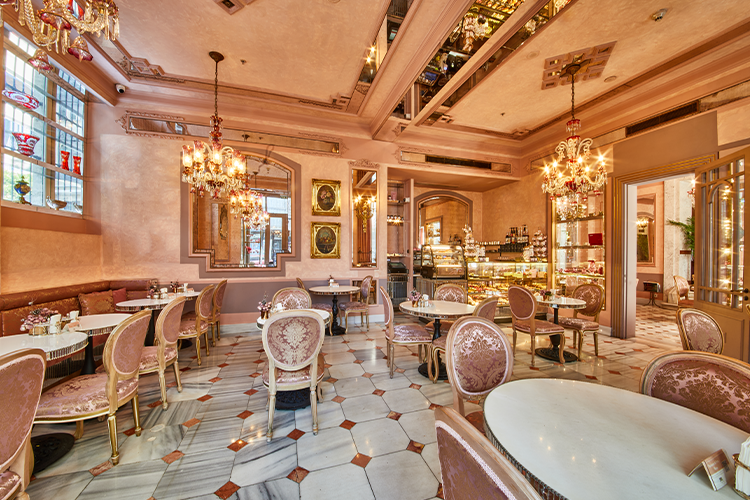Food & Drink Writing in the Ottoman Empire and Famous Writers
The formation phase of Ottoman cuisine, which is influential in most of today’s Turkish culinary culture, lasted quite a long time. Ottoman cuisine, which is a continuation of the heritage of the nomadic Turks living in Central Asia by interacting with other cultures for hundreds of years and combining them with their own culinary culture, offers a rich variety by giving place to the dynamics of both Turkish, Islamic and Western cultures.
However, it is not possible to come across many works on cuisine and eating and drinking culture in the Ottoman Empire. This is also due to the fact that eating and drinking writing was not developed all over the world in those centuries. It was in the 15th century for the first time that the dishes, which are praised in poems and artistic discourses, appeared before the reader as a source, and in the 19th century, eating and drinking writing increased a lot.
Mahmut Şirvani – Kitabü’t Tabih / 15th Century
Mahmut Şirvani, one of the most important physicians of the 15th century Ottoman Empire, both gave recipes in his book Kitabü’t Tabih, which is a translated work, and explained the benefits of many foods as a medical expert. Although Mahmut Şirvani has written many works on medicine, which is his main profession, today he is most known for his work named Kitabü-t Tabih. Because he gave the first work of the Ottoman Empire in this field. Although the original work written by Muhammet El Kerim’s Baghdad in the 11th century consists of 177 different recipes, Mahmut Şirvani partially originalized the work by adding the benefits of 82 different recipes and foods from the Ottoman cuisine.
It is thought that 82 recipes that Mahmut Şirvani added to Kitabü’t Tabih completely reflect the Ottoman Palace cuisine. At the same time, Kitabü’t Tabih is an important source of preventive medicine with its nutritional explanations. It mentions the benefits of nutrients as follows:
Spinach: It nourishes intelligence and body, increases fertility, increases appetite, is good for heart palpitations and stomach pain caused by stress.
Medfune (A kind made with aubergine and mutton): It strengthens the brain and body, nourishes, strengthens bones and marrow, but is difficult to digest food.
Nirbac: (A meal with mainly carrot and lamb) It facilitates digestion and increases appetite. It strengthens the stomach, is good for inflammation and wounds, purifies the mind and thoughts, and prevents the effects of poisonous foods from affecting the heart.
Mehmet Kamil – Melceü’t Tabbahin (Aşçıların Sığınağı) 18th Century
Mehmet Kamil’s work titled Aşçıların Sığınağı, published in the 19th century, focuses entirely on Ottoman cuisine. The 284 food and beverage recipes were prepared in 12 separate sections; There are many titles such as salad, kebab, compote, stew, cutlet, patty, soup and dessert.
Author Mehmet Kamil is one of the famous physicians of Istanbul like Mahmut Şirvani. The book, published 5 years after the Reforms Edict, was written as a reaction to the constant cooking of the same food in the Ottoman and Istanbul, and the richness in the variety of food was wanted to be made visible. The descriptions given in the book are regarded as the style of the book and the purpose of writing at the same time as an indicator of Westernization. The work was translated into English in the 19th century and presented to European readers. In this sense, it is of great importance for the interaction between Western cuisine and Ottoman cuisine. At the same time, it should be noted that Mehmet Kamil wrote in the preface of the book that western descriptions were given in this work belonging to him.
Another remarkable feature in the work is that Mehmet Kamil has opened a new title for desserts to be consumed before and with coffee. This title shows that in the Ottoman eating and drinking culture, coffee is of particular importance and the food prepared with coffee creates a new culture.
Ayşe Fahriye – Ev Kadını/19th Century
Ayşe Fahriye’s work on the food and drink and table layout called” Ev Kadını ” also gives tips on the transformed family and city layout of the Ottoman Empire. The book was published in 1883 and there are 887 different recipes in this work that everyone interested in culinary culture should read. The book covers the effects of westernization in the food and beverage culture as well as the qualities that give an idea about the Ottoman cuisine culture.
The work, which was prepared for Ottoman and Istanbul women with the idea of eating and drinking with Turkish manners, setting up a table setting, and being a good family woman, bears traces of cultural transformations in the 19th century Ottoman Empire. In this book titled Ev Kadını, Ayşe Fahriye gives detailed information to other housewives such as country feasts, the maid’s order, how to offer treats, and how to behave in the table press.
Mahmut Nedim Bin Tosun – Aşçıbaşı / 20th Century
Mahmut Nedim Bin Tosun’s book titled Aşçıbaşı, which was published in the last period of the Ottoman Empire, differs from other works in accordance with its content and purpose of writing. Mahmut Nedim Bin Tosun, an infantry designer, has presented 315 different recipes in his soft word in this book, which he started to write to record the recipes when he and his friends did not know how to cook.
The author, who also recorded the recipes he learned in the places where he served his military service, reflected not only the culinary culture of Istanbul but also the culinary culture of Anatolia. Although we cannot say that Ottoman palace cuisine and Istanbul cuisine are far from Anatolian culinary culture, the work has a different value as it mentions the recipes learned in Anatolia.
In the work written by Mahmut Nedim Bin Tosun with soft words and mischievous style, the changing names and cooking methods of a product from region to region are mentioned. The author discusses the culinary culture of many provinces from Rumelia to Anatolia and Eastern Anatolia and brings together the harmonic cuisine of the Ottoman Empire.



